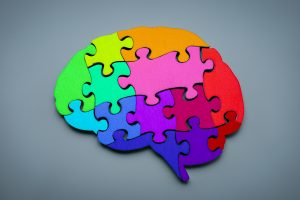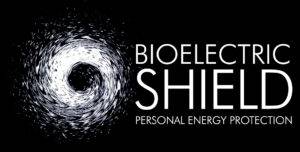
What do you as a teacher or parent need to know about Neurodiversity? Do you have a child or teen struggling with school and life? What’s causing their unhappiness?
There may be underlying issues that you aren’t aware of yet. If so, there’s a good chance that your child may be hypersensitive, also known as neurodiversity. This is a condition that results in an overactive or oversensitive nervous system. While it can be difficult for children and parents alike, there are ways to cope with hypersensitivity. Are you a parent of a child who seems to always be on edge?Read on for more information.
Table of Contents
- The Hypersensitive Child – is highly sensitive to their environment, reacting to foods, textures, people, and even places.
- Old Categories are Limited – the highly sensitive child is pigeon-holed as ADD, ADHD, ASD, or Sensory Processing Disorder. Still, perhaps they are simply highly sensitive people who find day-to-day interactions with others very stressful, but not enough to be labeled. These are the kids who often don’t get help.
- Hypersensitivity Can Appear as Boredom – hear about our Business Manager’s daughter, who was very smart but coped with school by going into her own world. She felt everything too deeply, and thus width drew from others.
- ADDitude Magazine– says ADHD seems to exaggerate everything – especially our senses.
- Hypersensitivity Shows up in different ways – if you are hypersensitive, something anyone else would consider a mild sound or feeling shows up for you as pain. Read about Mark, the tactilely defensive child who hates shows. Find out why.
- Neurodiversity – the latest way of looking at hypersensitivities – Steve Silberman, author of Neurotribes, concludes that a certain percentage of our population has brains wired completely differently than “normal” brains. They aren’t missing anything but simply have a completely different world perception, and a wide variety of traits are termed Neurodiversity. Temple Grandin, the famous autistic consultant, created cattle chutes that stopped freaking out cattle, thus lowering their panic reactions when moved from one place to another.
- Part I Conclusions: there are action steps you can take right now to help your child. Take advantage of the free HSP quiz we have on our site. Or get a free photo analysis consultation with our Occupational Therapist. Read other posts, including Back to School Tips, that address children with hypersensitivity and neurodiversity traits.
- Part II – previews of our continuing discussion and suggestions for helping your child if s/he is hypersensitive.
The Hypersensitive Child
Do you think you might have a highly sensitive child? Is your child or teen dreading going back to school? Have they been “diagnosed” with some label you’re not sure applies to them? Neurodiversity is the new term to describe children who are highly sensitive to their environment. Do you think your child sees and feels the world differently than other children? Does your child “overreact” compared with their peers or siblings?
Is it possible that there are underlying issues that you simply aren’t aware of yet?
You may think that’s a dumb question. Still, the methods for diagnosing issues have changed recently. In addition to ADD/ADHD and Autism Spectrum, experts recognize hypersensitivity in many children.
In this article, you’ll hear from AnnaMariah, our business manager, a Highly Sensitive Person, and me, Virginia Brown, a pediatric Occupational Therapist for 22 years.
Over the past 20 years, professionals have described hypersensitive children by naming their most obvious behaviors: ADD, ADHD, Sensory Processing Disorder, or ASD. They now see overlapping behaviors and traits that don’t fit previous categories.
Highly Sensitive Person is a newer category describing emotional, mental, and physical reactions.
And now, another newer category is called a Highly Sensitive Person (HSP). Some behaviors will help you identify these possibilities.
What you might notice:
- Are they sensitive to other people’s energy or moods – including kids and adults? Since they can’t tell you this, notice if they are anxious, fearful, uncomfortable, or moody, especially around certain people or large groups.
- Does your child dread going back to school? About 25% of kids are apprehensive, even fearful, about the school year. What’s causing your child’s unhappiness?
- Is your child affected by the energy around them? Do they feel bad in some areas or seem ill at ease or jumpy?
- Do loud sounds upset them? Do they complain about strong smells or even get physically ill from scents?
- Do they refuse to wear certain clothing? Perhaps they experience the fabrics or tags as scratchy or harsh.
- Would they rather play alone than on a playground or with other kids?
- Reactivity to certain foods.
Often, these kids don’t get diagnosed with a treatable issue because their school performance is usually good or exceptional. However, this group can also have a far more challenging time in school – and life – because they are not obviously “disabled.” They may be the quiet child on the playground who has no friends or, if lucky, has one friend. They may come across as the weirdo, get teased or bullied, and “act out” because they are bored or frustrated. In this article, you’ll read about our business manager’s daughter, a Highly Sensitive Person and ADHD, who found school very disagreeable with her neurodiverse brain pattern.
The Old Categories are Limited – We don’t fit into Pigeon-holes.

Does your school know that ADD/ADHD and Autism overlap with other behaviors called Hypersensitivity?
I want to be clear about something before I continue. Many experts are beginning to recognize that children that fall under these categories aren’t disabled or inadequate; they are just different. Discovering what your child is reacting to and what they need physically, emotionally, and mentally is a huge first step in helping them operate more easily in the world, school, and home. I, AnnaMariah, will tell my story first, then Virginia, and I will get more technical to explain recent discoveries.
How Hypersensitivity Can Appear as Boredom
I’m AnnaMariah, the mother of a daughter who was both highly sensitive and ADD/ADHD – she wasn’t diagnosed with ADHD until she was 45 years old! That diagnosis has changed her life because now she understands her overactive mind much better and is finding ways to deal with it (in her case, medication & simple awareness). She marvels at the ability only to have one or two thoughts at a time, not five! Once she gets through a stressful time, she will go off the meds and see if her ADD Focusing Shield will do the job alone. I’m confident it will, but currently, she’s dealing with a lot, so the less stress, the better.
How is it that she wasn’t diagnosed until just recently?
The answer is simple, she was able to be extremely focused and could spend hours quietly playing by herself or working on a project that interested her. Thus – she was not ADD/ADHD. She simply didn’t fit the popular picture at the time – she wasn’t out of control, bouncing off the walls, disruptive, or in constant motion, and she was focused for hours.
Her teachers called her sociable and unmotivated. One third-grade teacher wondered if she had reading issues because she only did one or two of the five weekly reading modules. This kid read long novels at home, not just kiddie books. Upon being questioned, she said the reading assignments were boring and childish and that no one ever said she had to do five, just to do what they could get done during each reading period. So, she just sat, thought about more interesting things, and pretended to be reading.
I knew she was brilliant and could get involved in something and not look up for hours – this is now called hyperfocus and is the flip side of distractibility. I also knew that she often didn’t listen and didn’t like to do things that bored her. She disliked waiting for others to answer or the teacher to finish her questions, causing much frustration.
She was also highly sensitive and easily affected by the emotions and feelings of those around her. She felt everything deeply, and it seemed at times that she was overwhelmed by a world that was too busy and chaotic for her. She is extremely intuitive and exhibits strong empath characteristics. Her emotions were always up and down. She’d be crying and upset one minute and laughing the next.
Drama Queen or Merely Frustrated and Bored?
Honestly, at times she seemed a bit of a drama queen. Her counselors weren’t any help. After all, she didn’t fit any criteria they currently had. It would be decades before anyone even began to talk about HSPs. Life may have been so much easier for all of us if we’d had some of the information available today. If I’d known the double factors of ADD and being an empath or HSP, I might have realized she wasn’t being dramatic, simply trying to express her frustration.
If she’d been diagnosed, I’d have been able to be a better mother with a better grasp on what was going on for her. Instead, too often, I just thought she needed to be motivated. Yeah, you guessed it, that didn’t work at all.
When she was diagnosed with ADHD at the age of 45, I began putting some things together based on my 24 years of talking to people here at BioElectric Shield– sometimes about themselves, other times about their children. I had noticed many characteristics of HSP, ADHD, and even Sensory Processing Disorder (SPD) overlap.
ADDitude Magazine reveals more about Hypersensitivity.
I started doing a little more research and found some great articles about ADD/ADHD and Hypersensitivity in ADDitude magazine.
ADHD seems to exacerbate and exaggerate everything — especially our senses. If you taste, smell, or hear in extremes, you’re not alone. Those are also characteristics of several other “conditions.”
Many children are labeled troublemakers or problem children because their needs aren’t addressed.

The range of what’s now being called neurodiversity is increasing. It has many overlapping symptoms, making it challenging, if not impossible, to pinpoint or pigeonhole your child into a specific category. Currently, neurodiversity includes ASD (autism and Asperger’s), SPS (Sensory Processing Disorder), ADD (Attention Deficit Disorder), ADHD (Attention Deficit Hyperactivity Disorder), and newly added HSP (Highly Sensitive Person) and Empath (a more intense form of HSP)
Hypersensitivity Shows Up in Different Ways
As a pediatric Occupational Therapist, I was constantly nerding out over new brain discoveries. Wouldn’t you GUESS that a warm shower could feel luscious, especially if you’ve just come in from a cold, raining walk? And the answer would have to be, “it depends!”.

I had a Mother tell me her son, Mark, refused to take showers. She said, “I offered him a nice warm shower and practically did a full-on marketing campaign about how GOOD this would feel. He stepped in the shower and then bolted out, screaming! I was flabbergasted! “What’s wrong?” I cried out. He said, “It feels like pins and needles in there. It’s horrible. I’ll never take a shower in my whole life, ever!”
Whoa, what just happened here? The Mom was completely freaked out. Well, wouldn’t you be too? I had to explain to her that she hadn’t done a bad thing, but instead, this tells us her child’s nervous system is hypersensitive.
I reassured her that her child was not a freak of nature (well, I didn’t put it that way). I said, “there is a term for this – and it’s called tactile defensiveness, and it’s just ONE of the many hypersensitive interpretations a person with an atypical brain will perceive a sensory input – like sound, vision, or touch.” Over the past few decades, what was a relatively unusual occurrence of this kind of thing, has grown and grown so that many of our kids have hypersensitivities.
In the 1970s, this was called a “sensory integration” problem – in other words, the child’s sensory or feeling receptors were not reporting accurate information to the brain. Her son, Mark, felt pins and needles, and she felt a soothing stream of warm water. Same shower, different reaction!
Neurodiversity a New Way of Looking at Hypersensitivities

If you are in a different neuro tribe, such as folks on the autism spectrum or who have other “wiring” in their brain, hot showers feel awful and must be avoided at all costs – even to the point of screaming and having a tantrum. Young children don’t have the words to explain, and they don’t have any way of knowing that how they experience something is different from you. No wonder you’re both confused, frustrated, and at wit’s end. You experience the world, emotions, and even your bodies differently.
It is no wonder that school specialists are having difficulty figuring out children who are part of a different neuro tribe. Their brains work differently from what we call “the norm” or neurotypical.
Increasing numbers of Hypersensitive Kids
For example, ADD/ADHD (attention deficit disorder/attention deficit hyperactive disorder), now often called simply ADHD, can be surprisingly difficult to diagnose. Many children are being labeled as troublemakers or problem children.
The CDC https://www.cdc.gov/ncbddd/adhd/data.html says 11 % of American children ages 4-17 have an attention disorder. That’s a 42% increase in ADHD diagnoses in the last eight years. How can we make some sense of what we are seeing with recent generations that include many neurodiverse individuals?
Part I Conclusions
We will repeat this section in Part II. These are the steps you can take now before you read Part II.
There is good news on several fronts.
Action Steps You Can Take Now
1. If you think you or your child has any neurodivergent traits, including any Hypersensitivity, first make your list of observations that would support that conclusion.
2. If you feel you observe behaviors in your child, meeting with the current teacher and sharing what you have observed would be appropriate. She can be alert to help your child cope with the extra sensitivity.
3. Take the Highly Sensitive Person quiz answering for you or your child, and see what types of sensitivity emerge. This quiz has five categories; you will get scores in each area. You can then go to each one of these areas, where we have written individual blogs on how to address these sensitivities to make life easier!
4. You can create calm, supportive environments that allow the overworked energy field to relax. I’ve included links to articles and resources below. Simply being aware of what is happening can help you or your child shift their focus
5. Order a BioElectric Shield. The BioElectric Shield can be worn to reduce the energy overwhelm from EMF and other people and situations.
- Our free photo analysis will provide you with an individualized recommendation based on our consultant viewing a photo and the answers to the questionnaire you’ll fill out for yourself or your child.
- Read more about the focusing Shield for ADD/ADHD that “bring the energy field in closer and continually bring your focus back to the task at hand. ” and reduce the EMF and other energies.
- We also have a specialty Shield for ASD. This ASD matrix Shield is designed to help to realign and clear some of the passages in the brain. It will help balance the person at mental, physical, and emotional energy levels. It will provide EMF protection and may help with certain aspects of life, including focus, staying calmer than usual, being more aware of their own space, and may help balance out some anxiety. Results will vary depending on the person. It will help different individuals with certain aspects of life.
If you or your child are ADD/ADHD or HSP (highly sensitive), we would be happy to talk with you about solutions that will make your child’s life so much easier (most likely).
- You can give us a call today at 541-201-8878
- Want more information: Read previous posts with tips on Back-to-School, about Children, about ADD/ADHD
- and about Highly Sensitive Persons
Written by Virginia Bonta Brown and AnnaMariah Nau
Virginia Brown’s Bio – Before starting the BioElectric Shield Co, Virginia had a 22-year career as an Occupational Therapist, treating both children and adults with Sensory Processing Disorders, Cranial-Sacral Therapy, and Myofascial Release. With this knowledge, Virginia can read new research and translate the data into useful actions a parent or child can take to cope with our new electronic environment.
After witnessing the numerous health effects EMF radiation had on their chiropractic patients, who were computer programmers, Dr. Brown and Virginia focused on finding solutions for EMF protection. After the invention of the BioElectric Shield, they co-founded the BioElectric Shield Co.
Since then, Virginia’s focus has been to provide effective and powerful EMF protection solutions. Based on her interest in ADD/ADHD and ASD, she facilitated the development of special crystal matrixes to help children and adults focus better, think more clearly, and have happier, more productive lives. She has served as the President of the company since 1991.
I’m AnnaMariah; you saw part of my story above. I’m not a psychologist or an expert, but I am an empath/HSP and have worked with many HSPs and empaths, studied ADHD, what it’s like to be highly sensitive or an empath, and talked to thousands of people about their struggles over the years – some of them HSPs, empaths, ADD, ADHD, on the spectrum, etc., I have been noticing many of areas that overlap and there are quite a few who seem to fit into more than one category. As an empath, the BioElectric Shield changed my life, and the next most important change was learning more about what it is to be highly sensitive and learn new ways to cope and create more ease in my life. Learning what’s going on is a huge step.
We hope we can help you and your family find answers and solutions.
Part II Preview: Content Summary
- What is hypersensitivity? What are the other names for Hypersensitivity
- Do you have a child who is having problems focusing on school work?
- Does your school think it’s ADD/ADHD? Do they know anything about Hypersensitivity?
- Overlapping Sensitivities: Sensory Processing disorder– Autism – HSPs/Empaths -ADD/ADHD – Similarities
- What do ADHD and Hypersensitivity have in common?
- The Good News – steps you can take now to help your child.


0 Comments